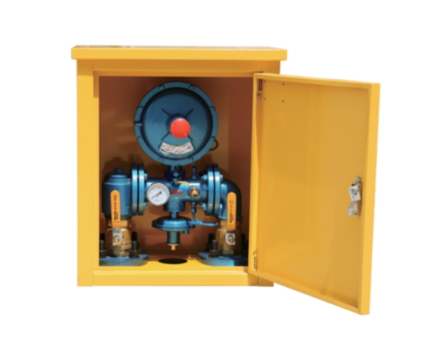
Nov . 23, 2024 20:48
Back to list
Natural Gas Pressure Reduction Station Overview and Operational Insights
Natural Gas Pressure Reduction Stations An Overview
Natural gas has become an essential part of the global energy landscape, serving as a vital source of fuel for various industries, heating, and electricity generation. However, the distribution of this energy source requires careful management, especially when it comes to pressure levels. This is where natural gas pressure reduction stations (PRMs) play a critical role.
Understanding Natural Gas Pressure
Natural gas is delivered through extensive pipeline networks under high pressure, which is necessary to ensure efficient transportation over long distances. However, once it reaches its destination, it often needs to be reduced to a lower pressure suitable for safe use in residential, commercial, and industrial applications. This is where pressure reduction stations come into play.
What is a Pressure Reduction Station?
A natural gas pressure reduction station is a facility designed to lower the pressure of natural gas before it enters local distribution networks or reaches end users. These stations are equipped with various components, including pressure regulators, safety valves, filters, and telemetry systems, all of which work together to ensure that the gas is delivered safely and at the correct pressure.
How Does It Work?
When natural gas arrives at a pressure reduction station, it typically comes in at a high pressure, sometimes exceeding 1,000 psi (pounds per square inch). The gas enters the station and flows through a series of pressure regulators. These devices are designed to adjust the pressure of the gas to a specified level, which is usually between 1 and 60 psi, depending on the requirements of the local distribution network or end-user application.
.
The Importance of Pressure Reduction Stations
محطة تخفيض ضغط الغاز الطبيعي

Pressure reduction stations are crucial for several reasons
1. Safety High-pressure natural gas is hazardous. Pressure reduction stations mitigate risks by ensuring that gas is delivered at safe levels. This is particularly important in urban areas where gas distribution networks run alongside residential and commercial properties.
2. Reliability By maintaining consistent pressure levels, these stations ensure a reliable supply of natural gas to consumers. Any fluctuations in pressure can disrupt service and lead to potential complications in gas appliances and heating systems.
3. Efficiency Proper pressure regulation optimizes gas flow in distribution systems. It minimizes energy losses and enhances the overall efficiency of the gas supply chain.
4. Environmental Considerations By ensuring the safe and efficient transportation of natural gas, pressure reduction stations contribute to reducing methane emissions. Controlled and efficient gas distribution systems are essential for minimizing the environmental impact of natural gas operations.
Challenges and Future Developments
While pressure reduction stations are effective in managing natural gas pressure, they also face challenges. Aging infrastructure, increasing demand for natural gas, and the need for modernization to incorporate smart technology are pressing issues. The integration of advanced monitoring and automation systems can enhance operational efficiency and safety.
Furthermore, as the energy landscape evolves with the rise of renewables and changes in consumption patterns, pressure reduction stations will need to adapt. This includes potentially facilitating biogas or hydrogen blends in the future, which requires new engineering solutions and regulatory considerations.
Conclusion
Natural gas pressure reduction stations are vital components of the energy infrastructure, enabling the safe and efficient delivery of natural gas to consumers. As the demand for natural gas continues to grow, ensuring that these facilities are effectively maintained and upgraded will be crucial for meeting future energy challenges. Through innovation and investment in new technologies, pressure reduction stations will remain an integral part of a sustainable energy future.
Next:
Latest news
-
Safety Valve Spring-Loaded Design Overpressure ProtectionNewsJul.25,2025
-
Precision Voltage Regulator AC5 Accuracy Grade PerformanceNewsJul.25,2025
-
Natural Gas Pressure Regulating Skid Industrial Pipeline ApplicationsNewsJul.25,2025
-
Natural Gas Filter Stainless Steel Mesh Element DesignNewsJul.25,2025
-
Gas Pressure Regulator Valve Direct-Acting Spring-Loaded DesignNewsJul.25,2025
-
Decompression Equipment Multi-Stage Heat Exchange System DesignNewsJul.25,2025

